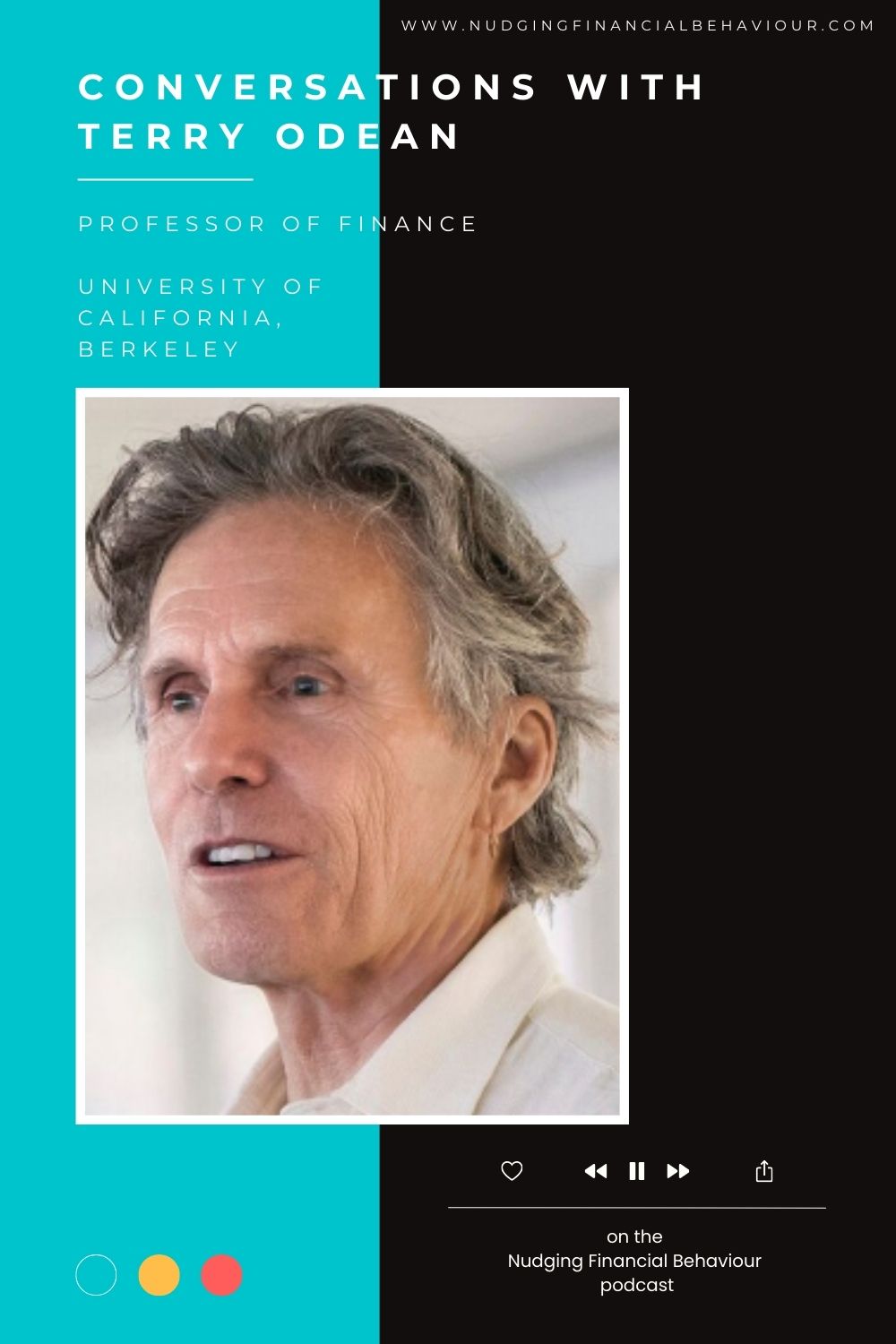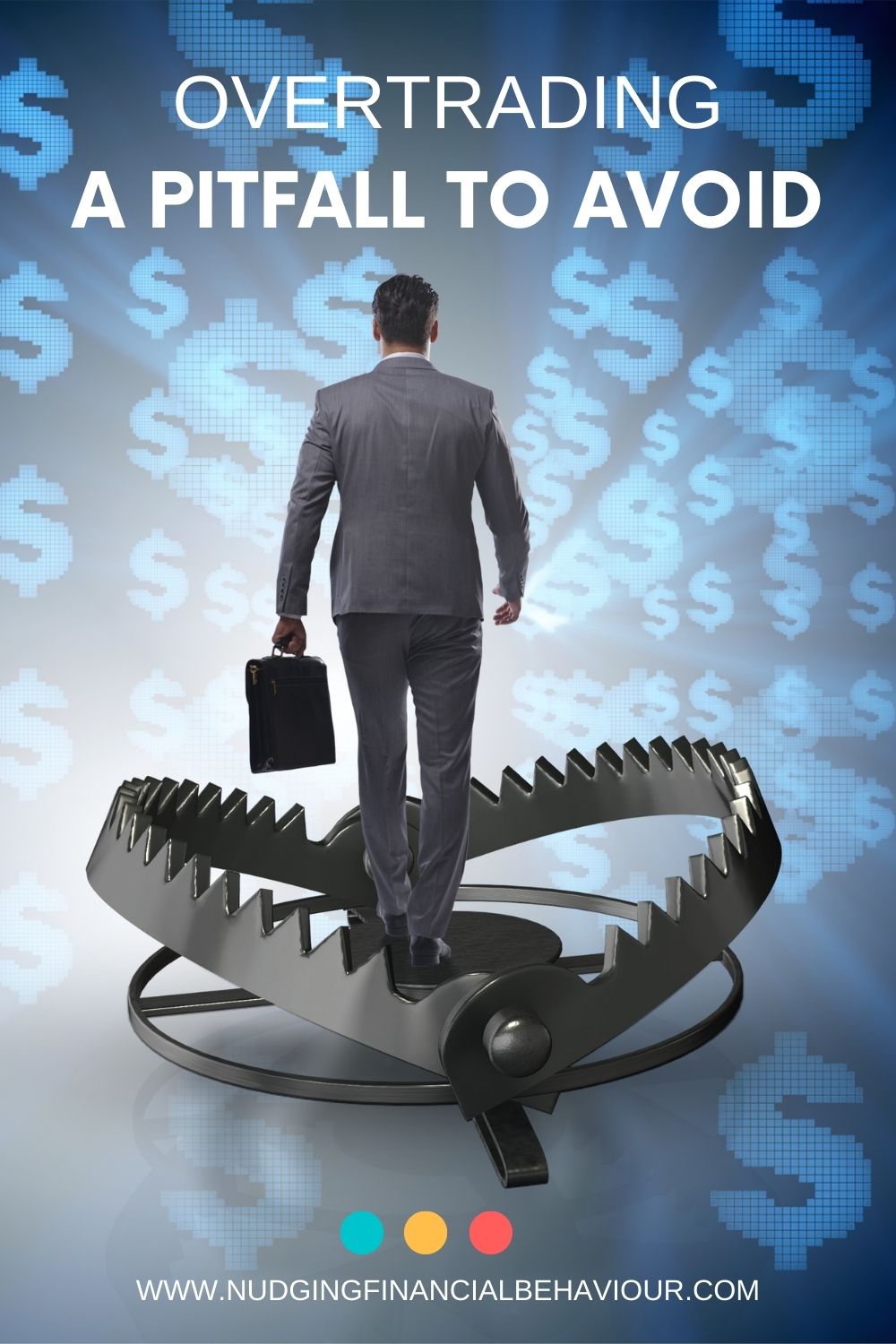In the intricate world of investing, one phenomenon stands out for its manifestation of loss aversion: the disposition effect. In this post, we delve into this intriguing aspect of human behaviour, backed by insights from Terry Odean, a prolific academic on the subject manager and Professor of Finance at the Haas School of Business, UC Berkeley.
Watch the full episode and interview below or listen to it via your favourite podcast streaming platform. If neither of those options appeal to you, then continue reading… besides, that’s why we’ve created this blog post.
Have you ever found yourself holding onto a losing investment, hoping against hope for a turnaround? That’s rather risky behaviour, don’t you think?
Do you remember prospect theory and what loss aversion is? And remember it refers to how we’re risk-seeking with losses… Doesn’t that sound like what you’re doing?
On the flip side of that, do you swiftly cash in a gain at the slightest hint of a profit? Let’s analyse this behaviour… You’re not taking much of a chance here. You’re playing it safe. But it actually shows that you’re being risk averse.
Coming back to loss aversion. You’re being risk-averse with your gains and risk-seeking with your losses. You’re selling your winning positions (the share that made a profit about that purchase price) but holding the losing positions. Can you see how that’s loss aversion?
At its core, the disposition effect reflects a paradox: while investors eagerly embrace gains, they shy away from acknowledging losses. Share on XThis asymmetrical risk perception is a hallmark of loss aversion, a psychological bias deeply ingrained in human decision-making.
We actually have our own bit of local research on this. Feel free to visit our research page, that’s where we post all our relevant academic research.
This study focused on individual investors in the South African market. We got data of just under 5 000 investor accounts from a South African stockbroker. But in short, we had 2 groups… investors acting in their own capacity, and those who had the assistance of a professional investment advisor. And, not unsurprisingly, we found that the investors were all exhibiting the disposition effect. But, the more interesting finding is that the disposition effect was less pronounced for the investors who were working with an advisor.
The investor’s chief problem – and even his worst enemy – is likely to be himself.
As we keep saying, education and awareness… and if you don’t have it yourself, getting a professional to do it with you, can really limit the damage that some of these biases can cause.
Terry Odean has done some extensive research on the disposition effect. One of his papers “Are investors reluctant to realize their losses”, which, at the time of writing this is sitting on over 5500 citations, is seminal in the area.

From its initial discovery to recent findings linking it to overconfidence, his experimental analysis and research underscores the enduring relevance of understanding investor behaviour.
“I think the biggest thing is it’s robust. I currently have what we call a working paper… We argue that the disposition effect, this tendency to hold onto your losers, to postpone selling stocks for a loss and instead to sell your winners, can contribute to overconfidence.”
“… if people sell their winning investments and then go back and say to themselves, oh, how good of an investor am I? It’s quite possible that many of them just sort of count how many stocks they sold for a gain and how many they sold for a loss. But if you’re selling your winners and holding onto your losers, that’s going to give you an upward bias in what your performance is.”
“The other thing we find is they tend to exaggerate how many stocks they sold for gain compared to what they actually did. So, they remember doing better than they did, and they use this self-serving metric when assessing their ability… It’s one of the things that contributes to overconfidence.”
The disposition effect and overconfidence. An interesting observation. The power of research – helping us learn more and more about ourselves and the world around us.
Beyond disposition effects, Odean’s research sheds light on the perils of overtrading – a tendency that not only erodes returns but also reflects poor decision making.
It would be remiss to not also chat to Terry about overtrading. With papers like ‘Trading is hazardous to your wealth‘ and ‘Do investors trade too much‘, he has done some extensive research on the subject matter.
“Brad Barber and I looked to see whether the people who were trading most actively were doing better or worse than the people trading less actively. That was a very busy time in the market, 91 to 96. But we found that the 20 percent of investors who traded most actively underperformed the least active, the buy and hold investors, by about six percentage points a year, which is huge.”

“Later… we looked at data in Taiwan. We had every trade for every investor in Taiwan. We found that the retail investors, through their trading activity, were losing the equivalent of about 2% of GDP. It was costing them in the neighbourhood of 4 percentage points a year or two trade.”
By advocating for a disciplined approach and embracing low-cost index funds, Odean offers practical strategies for long-term investors.
“I teach personal finance to big classes of undergrads. What I tell them is when they’re saving for retirement, they should simply buy and hold low-cost mutual funds, generally what we call index funds. Find funds that have very low fees, which is quite possible these days, and just hold them.”
“And if you find that you just really enjoy trading, tell yourself, okay, this is entertainment, this is something I enjoy doing, this is not my long-term save for retirement, and take an amount of money that you can afford to possibly lose much of, set it aside in a very separate account and play with that.”
“It’s probably better than betting on sports, but it’s probably gonna be more expensive than going to the movies.”
Useful tips and wise words from your teacher.
Investing should be more like watching paint dry or watching grass grow. If you want excitement, take $800 and go to Las Vegas.
Bringing it back to the disposition effect… how do we train ourselves to realise those losses?
To counteract the disposition effect, Odean suggests pre-defined rules, such as selling investments after a predetermined loss threshold. By introducing accountability and rationality into decision-making, investors can mitigate the impact of biases and optimise their portfolio management.

“Obviously, if you follow the advice I just gave and buy and hold a broad-based low-cost index fund, this isn’t going to be such an issue. But if you are trading, then probably the thing to do is give yourself some rules in advance. One typical rule is that sometimes money management funds will have for new managers, they just say, if you buy something and it drops 10%, you have to sell it.”
“And I heard a different rule when I was at the conference. One of the money managers said he tells his traders, you sell it, and then you ask yourself, do I want to buy it back?”
“So, it’s an interesting question, because once you’ve made that sale and just said, okay, it’s done, you don’t own it anymore. Now, do you want it in your portfolio?”
Such an interesting question to ask oneself. Think for yourself, are there things that you own that you wouldn’t buy again if you didn’t own it. It’s quite illuminating when you frame it in that way and think about it.
The disposition effect is really a great practical way to see how loss aversion can impact your financial decisions. Just to recap – when you are loss averse, you become risk averse with your gains and risk seeking with your losses.
Okay, let’s break it down once more because so we really understand the concept.
You’ve got a share that’s made you a profit. Suddenly… your loss aversion kicks in and you start to fear that you’ll lose that profit if you hold onto the share. So, you sell it and hold onto your profits (even though there’s the chance it could have made you some more profit if you held onto it for longer). But you’re not willing to take that risk.
Now, on the other hand, I said you become risk-seeking with your losses. For example, you have a share that’s made a loss for you. The thought of selling that share and accepting that loss as final is painful when you’re loss averse. So, you’re actually willing to hold onto that share, despite the chance of it making further losses.
And yes, there’s some mental accounting and regret avoidance tucked in their too. If you’ve ever regretted doing something, you’re human and you’ll know that the feeling of regret is unpleasant and one that we’d rather avoid at all costs. So, we make decisions to minimise regret. We don’t want to regret not bagging those gains, so we sell, quickly!
The investor’s biggest enemy is not the stock market, but his own emotions.
Now… when you hear the term ‘disposition effect’, many investors might know that this is what it’s referring to… selling winners while you ride losers. But now YOU KNOW what it’s ACTUALLY all about … It’s all got to do with your loss aversion.
As we unravel the complexities of investor psychology and behavioural finance, it becomes evident that understanding and mitigating biases are paramount for achieving financial success. By confronting the disposition effect and embracing rational strategies, investors can navigate the tumultuous waters of the market with confidence.
In our next post, we’ll explore the concept of impression management, examining how savvy investors leverage loss aversion to their advantage. Stay tuned for insights into mastering the art of strategic decision-making in investing.
Narrow framing – Narrow framing, the compromise effect, glossing, and the enabling frame. We need frames to make sense of the world. But they cause problems.
The anchored trader – Anchors tie us down and can have serious consequences for investors and traders. Don’t be the anchored trader.
Share your answer to that question in the comments below.
I am passionate about helping people understand their behaviour with money and gently nudging them to spend less and save more. I have several academic journal publications on investor behaviour, financial literacy and personal finance, and perfectly understand the biases that influence how we manage our money. This blog is where I break down those ideas and share my thinking. I’ll try to cover relevant topics that my readers bring to my attention. Please read, share, and comment. That’s how we spread knowledge and help both ourselves and others to become in control of our financial situations.

Dr Gizelle Willows
PhD and NRF-rating in Behavioural Finance
Receive gentle nudges from us:
[user_registration_form id=”8641″]
“Essentially, all models are wrong, but some are useful.” – George E.P. Box
